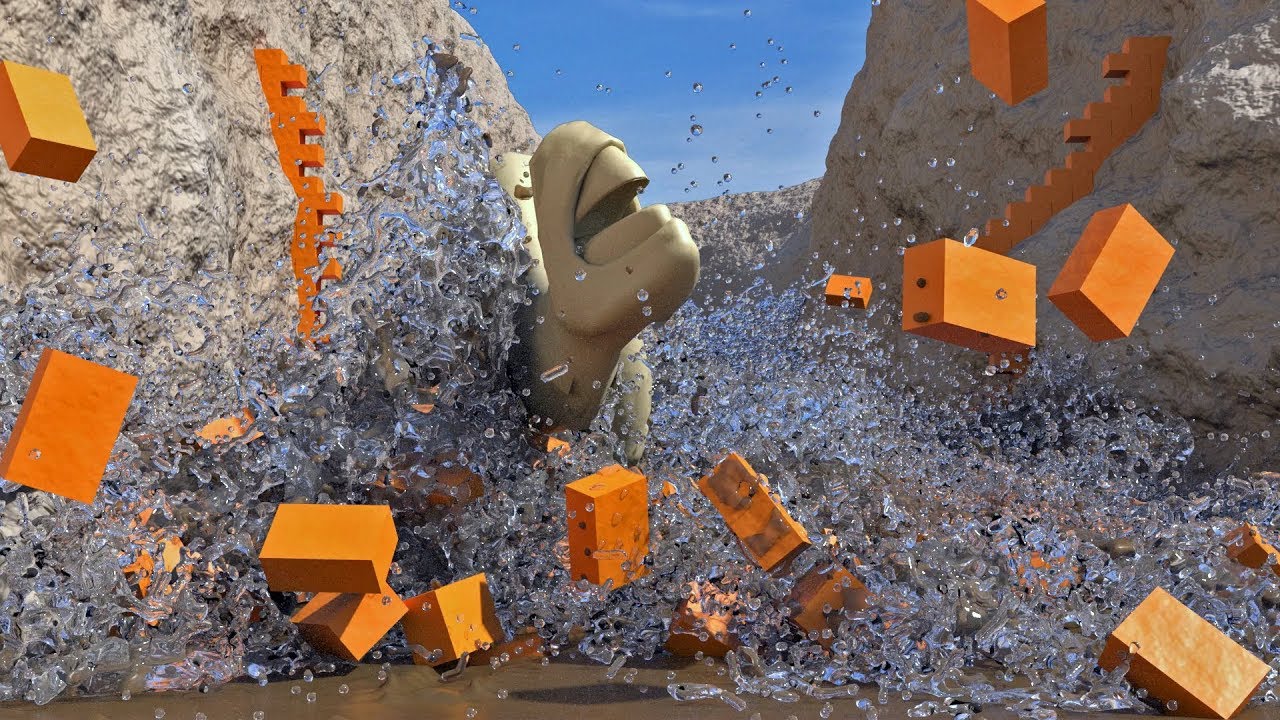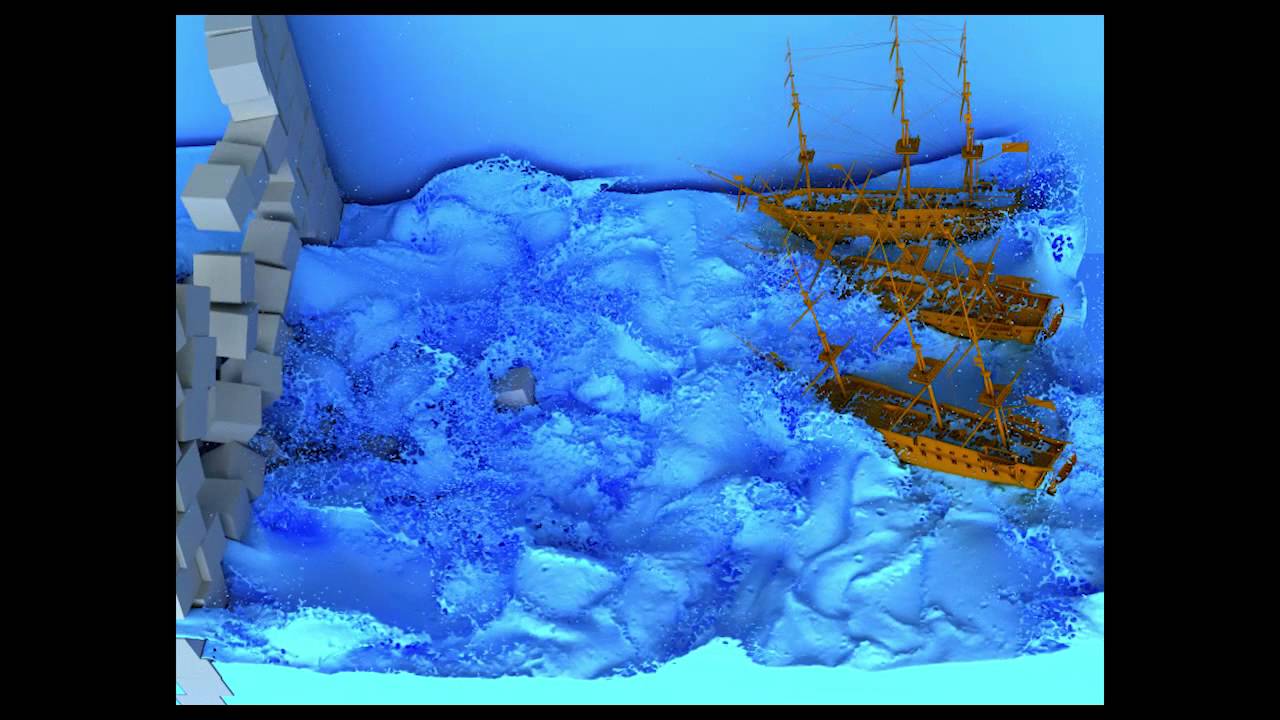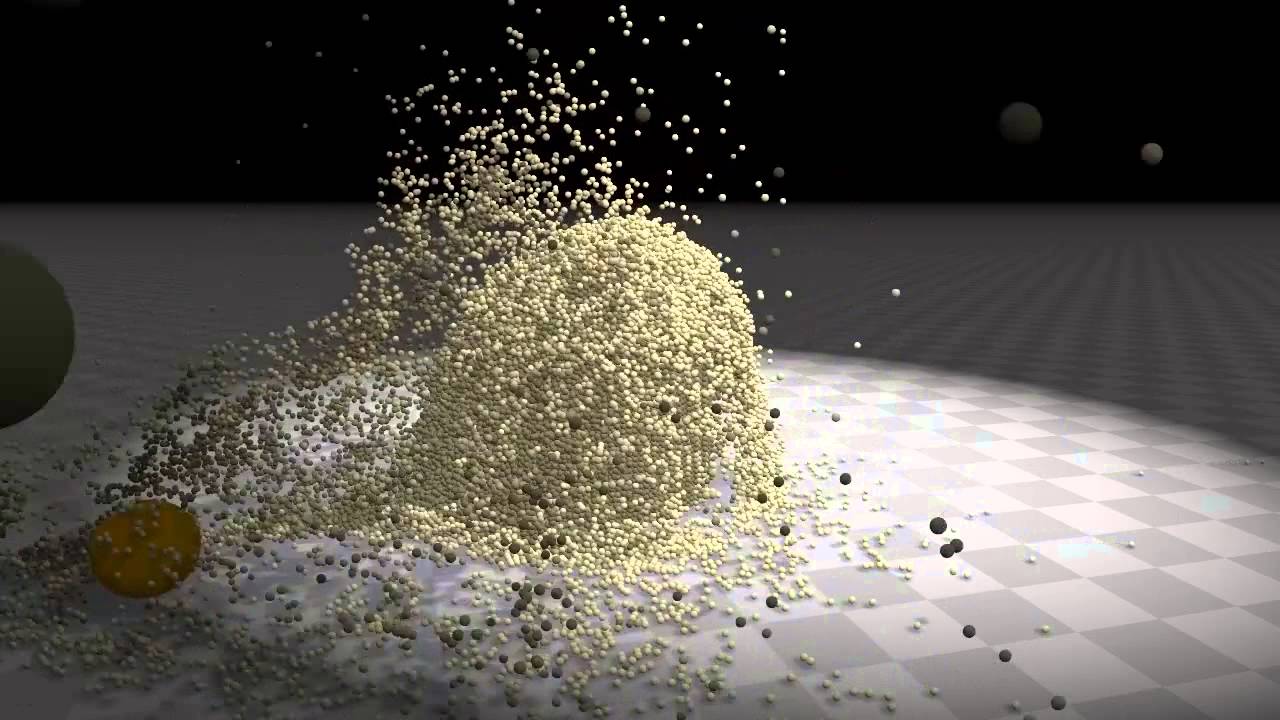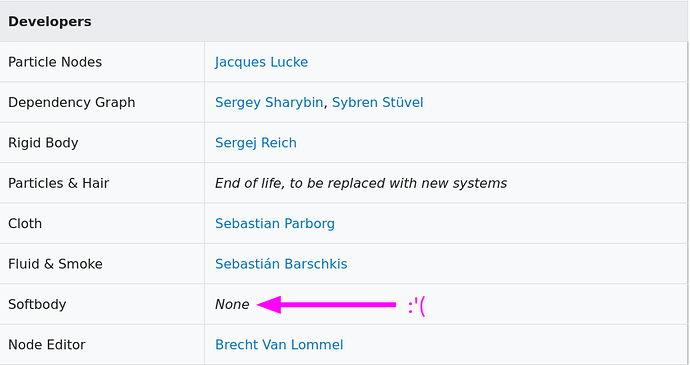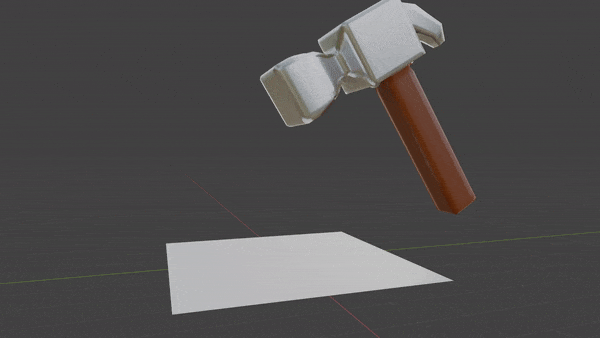WARNING: Wall of text ahead.
Physics simulations in blender did go (and are still going) through a lot of ups and downs throughout the years, tracing all the way back to version 2.40 (the oldest one with “proper” release notes I could find).
2.40:
- New Fluid simulations using “El’Beem” or LBM (Lattice-Boltzmann Method)
- BGE (Blender Game Engine), Particles and Cloth were all already there (pre 2.40)
2.41: …
2.42:
- New Physics Engine
- Fluid sim + Particles + BGE improvements
2.43: Fluid sim + BGE improvements
2.44: BGE improvements
2.45: …
2.46:
- New Particles System
- Fluid sim + BGE improvements
2.47: …
2.48: Fluid sim improvements
2.49: BGE improvements
2.50-2.59: … (Couldn’t find a “proper” release note for what happened during this period)
[EDIT]
- New Smoke simulation system
- New Particles System
[/EDIT]
2.60: BGE improvements
2.61: …
2.62: BGE improvements
2.63: …
2.64: BGE improvements
2.65:
- New Fire type Simulations
- other Fluid sim improvements
2.66:
- New Fluid simulations using SPH (Smoothed Particles Hydrodynamics)
- New RBD (Rigid Body Dynamics) in the viewport (previously only available in BGE)
- BGE improvements
2.67: …
2.68: Fluid sim + Particles improvements
2.69: …
2.70: …
2.71: BGE improvements
2.72: BGE improvements
2.73: …
2.74: Particles (Hair) improvements
2.75: BGE improvements
2.76: BGE improvements
2.77: BGE improvements
2.78: …
2.79: …
during 2.80 dev period: Bye Bye BGE…
2.80: …
2.81: …
2.82:
- New “Mantaflow” Fluid (Fire,Smoke/Liquid FLIP “Fluid Implicit Particle”) simulation system
- Cloth improvements
2.83: Fluid + Cloth + Hair improvements
2.90: Cloth improvements
2.91: Fluid + RBD improvements
2.92: Fluid improvements
- 37 Releases (2.40-2.92 “excluding 2.5x”)
- 13 of them had zero physics improvements
- 10 releases had only BGE improvements (most of 2.7x) which ended up removed…
- Particles have been reworked once (2.46) and are being reworked again (particle nodes)
- Fluids have been reworked twice, from LBM to SPH to FLIP/APIC
The current state of blender physics as of “01/22/2021” with 2.91 as the latest stable release:
- The Particle system is starting to show it’s age (implemented 12 years ago)
- The Fluid system have a few nasty bugs and is limited in what it can do compared to many new techniques
- Bullet engine is lacking GPU acceleration and soft bodies are a pain to work with
- Cloth is crying in the corner with nobody to play with
- The only way to fracture things is an old addon (cell fracture) stuck on version 0.2 with a slow algorithm and disruptive workflow (the fracture modifier branch have quite an amazing set of tools that could help, but there seems to be a few road blocks that needs to be cleared first “like right now ? please ?” the devs should play well together for the better future of Blender !)
Basically nothing is working “properly” with 3/4 engines doing their own thing with little communication between them.
Isn’t it time to get things done the “right” way ?
What I’m hoping for, is a Multi-Physics solver that let all aspects of physics to play nice with each other.
There are many white papers about all kinds of techniques for two way coupling for fluid-rigid interaction, just like Cycles/EEVEE, some of them are geared toward physically based methods, while others are suited for real time simulations with less emphasize on accuracy, to name a few:
(Latest iteration 2019)
Paper: https://animation.rwth-aachen.de/media/papers/63/2019-TOG-StrongCoupling.pdf
They rendered most of those simulations in Blender, they even recorded an AR simulation with the blender rocket sitting there in the corner ![]()
Same people with their first iteration of the technique back in 2012
One more technique leveraging NVIDIA’s (Now Open source) Physx for real time Fluid-Rigid interaction (SIGGRAPH 2014)
Paper: http://mmacklin.com/uppfrta_preprint.pdf
With such techniques, not only it would open up all kinds of interactions, but it will also help the dev maintain ONE single API/Framework/Engine instead multiple conflicting ones that are limited on their own and provide more work then needed. (or so it seems, correct me if I’m wrong).
Blender did come a long way, I can’t deny the huge efforts, but it seems to me that some parts are being “neglected” in favor of others (lack of man power I guess?), blender have now a nice amount of funding (in hope for more) to afford small teams per module.
- How about we start by updating those module roadmaps please ?
Thanks In advance for anything new physics related in the horizon.
Voidium.
